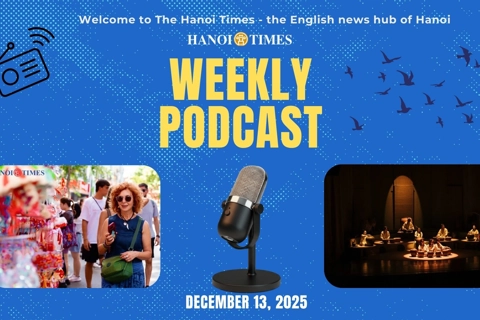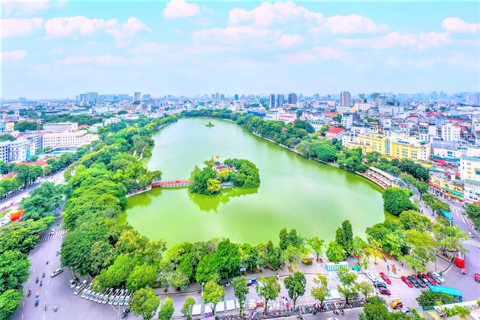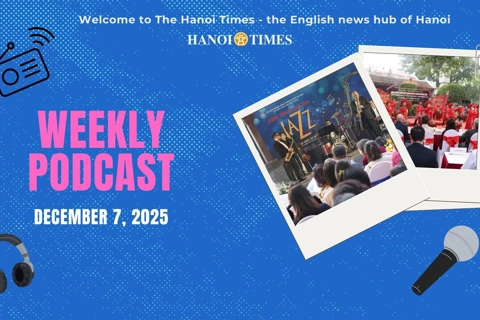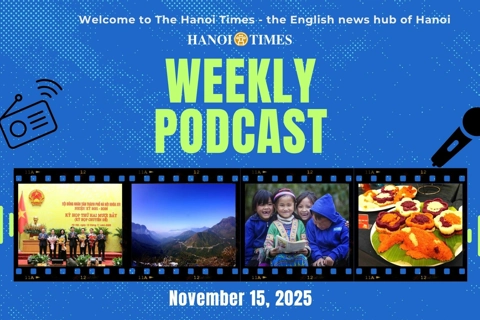The jungle school where ink defied bombs and gave birth to Vietnamese journalism
Remembering the wartime roots of Vietnamese journalism, where ink challenged violence and classrooms were hidden deep in the jungle.
THE HANOI TIMES — A young colleague sat by the bus window, quietly wiping away tears not from homesickness or motion sickness, but from a story. A story about a journalism class in the forest, where students sat on bamboo slats and wrote news with broken pencils while enemy planes thundered overhead.
It was 1949. The Huynh Thuc Khang School of Journalism was established with its name bestowed by President Ho Chi Minh in honor of Huynh Thuc Khang, whom he praised as “highly knowledgeable, remarkably resilient, and profoundly virtuous.”
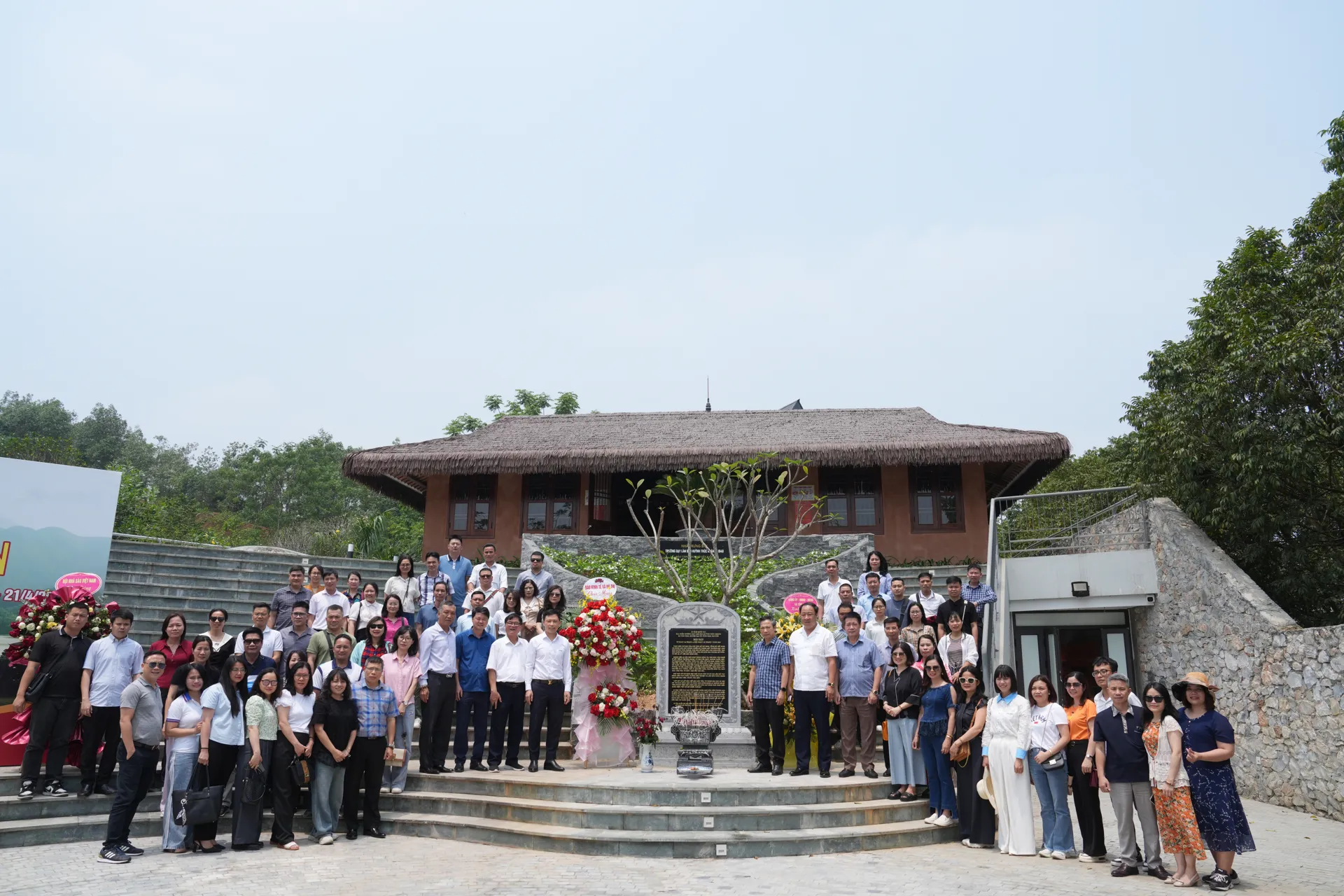
Field trip participants gather at the memorial site of the Huynh Thuc Khang Journalism School in Thai Nguyen. Photos: The Hanoi Times
I glanced at her, then out the window. The forest rolled by, like time unwinding in reverse. It no longer felt like April 2025, but something older, deeper. We were being invited into the raw essence of journalism, stripped of roundtables, press conferences, and PR spin. Just a pen, a piece of paper, and the belief that words could stand up to bullets.
We didn't go to the northern province of Thai Nguyen for sightseeing, nor for photos or reports. We came to listen, sit with the story, and ask ourselves how deeply we understand this profession.
Where history echoes through silence
President Ho Chi Minh's memorial at De Pass in Phu Dinh Commune doesn't need a guide. Just stand still, let the forest breeze pass, and you'll feel the footsteps that once changed the course of a nation. Few know that this was the nerve center of the revolution. The silence is so deep you can almost hear the breath of generations past.

One of the first pieces of news of the revolutionary press from those trained in Huynh Thuc Khang Journalism School.
What stays with you isn’t awe, but a quiet ache, the ache of being born into peace and realizing how easily we forget what it cost. How much blood and ink.
Built in the late 1940s, Vietnam's first journalism school was a handful of thatched huts in the jungle. Here, students learned how to write in the dark, how to finish a story without a typewriter, and how to guard their information as carefully as their lives.
The classroom was nothing more than a bamboo frame with a tarp stretched over it. The floor was dirt, sometimes wet. There were no desks, just logs or bamboo mats. When it rained, the blackboard would crumble. They scattered when the bombs came too close, committing the words to memory and rewriting them later. There was no electricity, no guarantee they'd live to see their story printed. But they wrote anyway.
Lessons were held on makeshift blackboards or whispered between meals cooked over firewood. Paper was scarce, ink had to be conserved. The smell of smoke mingled with that of sweat, rain, and urgency. It wasn't romantic. It was survival.
The teachers with no podium
And then there were the teachers, revolutionaries themselves, who understood that teaching journalism was about more than words and style and structure. They taught what it meant to be a voice, a witness, a shield. A surviving student once recalled how a teacher used his own ration of paper to give students a chance to write.
They taught that facts could be as powerful as rifles. That a sentence, properly placed, could change the morale of a battalion. That truth carried weight and could not be silenced even in a war of bullets.
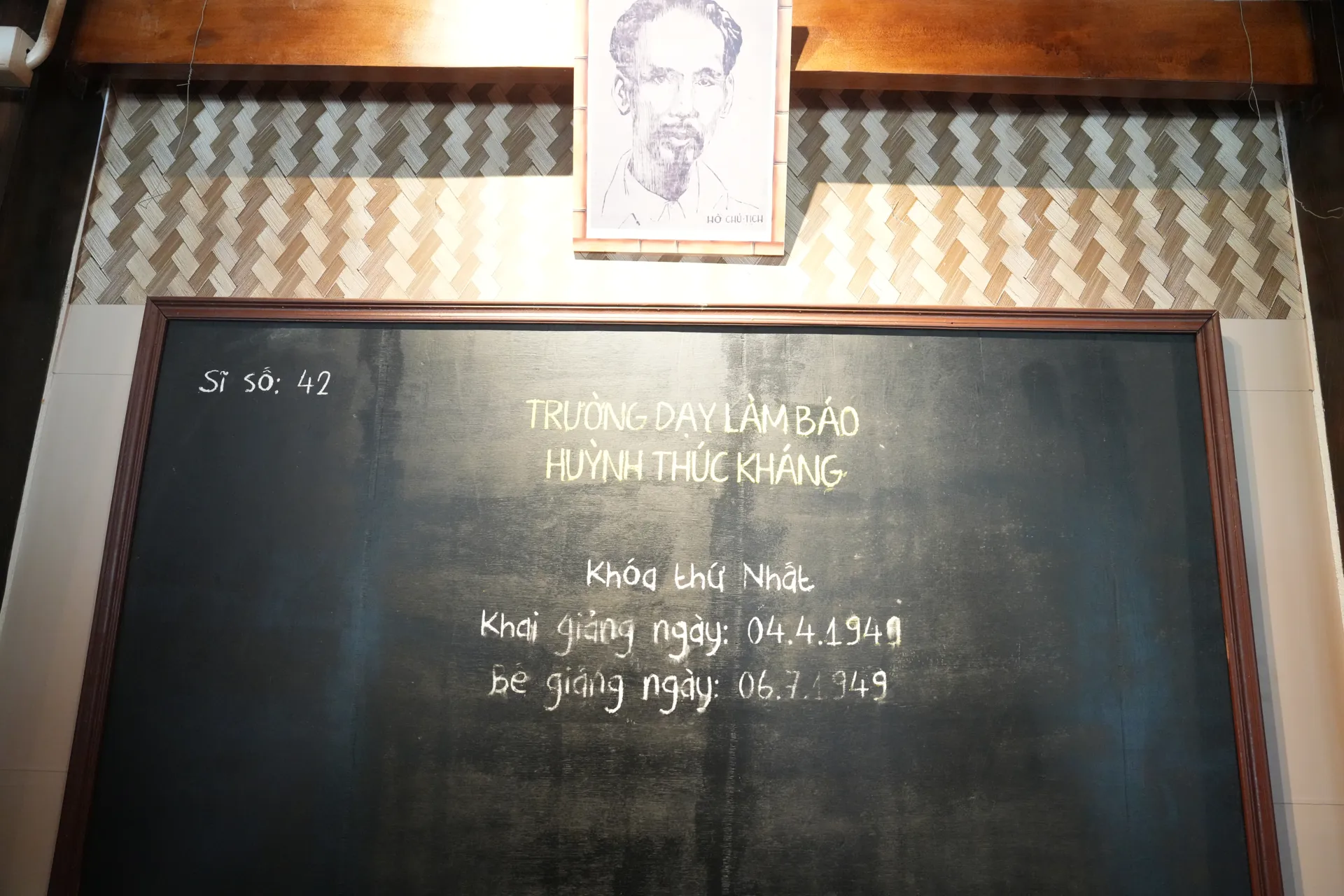
The photo on the chalkboard is of President Ho Chi Minh, who founded and named Vietnam’s first journalism school. The original chalkboard lists the first cohort of the Huynh Thuc Khang Journalism School in 1949.
We heard stories of the pioneers who studied there: Hoang Tung, who laid the foundation for the Nhan Dan newspaper, and Nguyen Thanh Le, a brilliant diplomat. They weren't just journalists but peacemakers, negotiators, the ones who gave Vietnam a voice before it had a seat at the international table. One person in our group said: "This wasn't just a school for writing the news. It was a place to learn what it means to be a journalist." I wrote that down in my notebook as a promise to myself.
Some assignments give you facts. Others reshape your convictions. This was the latter quiet, image-light, but unforgettable. I trained abroad, immersed in the language of media freedom, social impact, and emerging tech. But nowhere did I feel the soul of journalism more than in Thai Nguyen. In Vietnam, this craft was born not out of convenience but out of necessity, out of fire and faith, from oil lamps and torn paper, out of ideals of life and death.
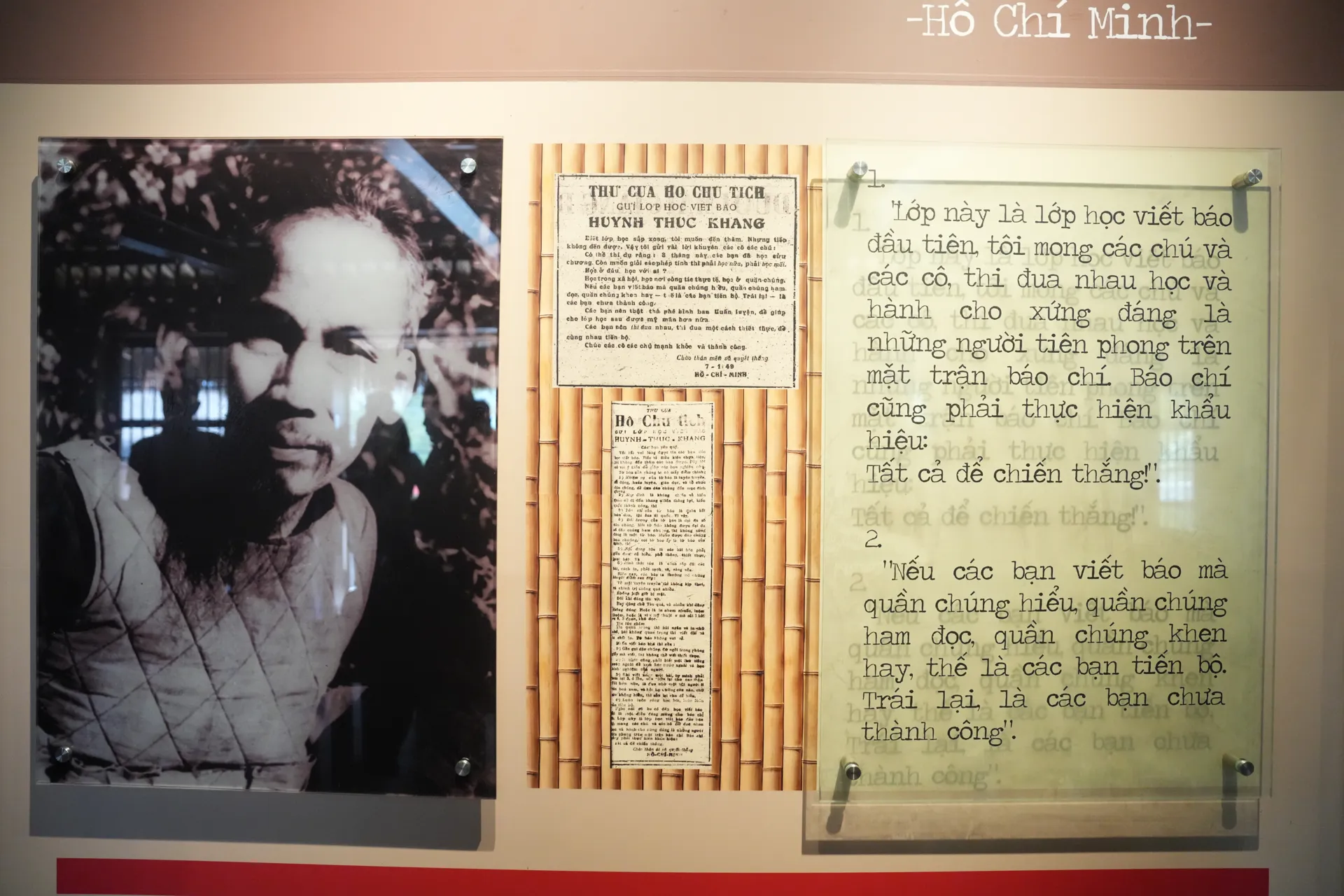
A letter from President Ho Chi Minh to the first journalism students, encouraging them to master their craft and serve the people.
We often talk about the pressures of journalism in the digital age, shrinking attention spans, social media scrutiny, and disinformation storms. But what we face today is a different kind of battlefield. And perhaps by looking back at those who reported through gunfire and hunger, we can find perspective, maybe even courage.
I returned home feeling more connected to my country and to my craft. For in times of peace, my pen may never face bombs, but it still carries the duty of memory, truth, and the nation's image in every word.
From jungle roots to digital frontlines
The jungle school didn’t just train writers, it passed on something harder to teach - conviction. That legacy now falls on the shoulders of today's journalists, who navigate the clutter of clicks and algorithms. But the mission hasn't changed; it's still about seeking the truth, giving voice to the unheard, and writing not just with skill but purpose.
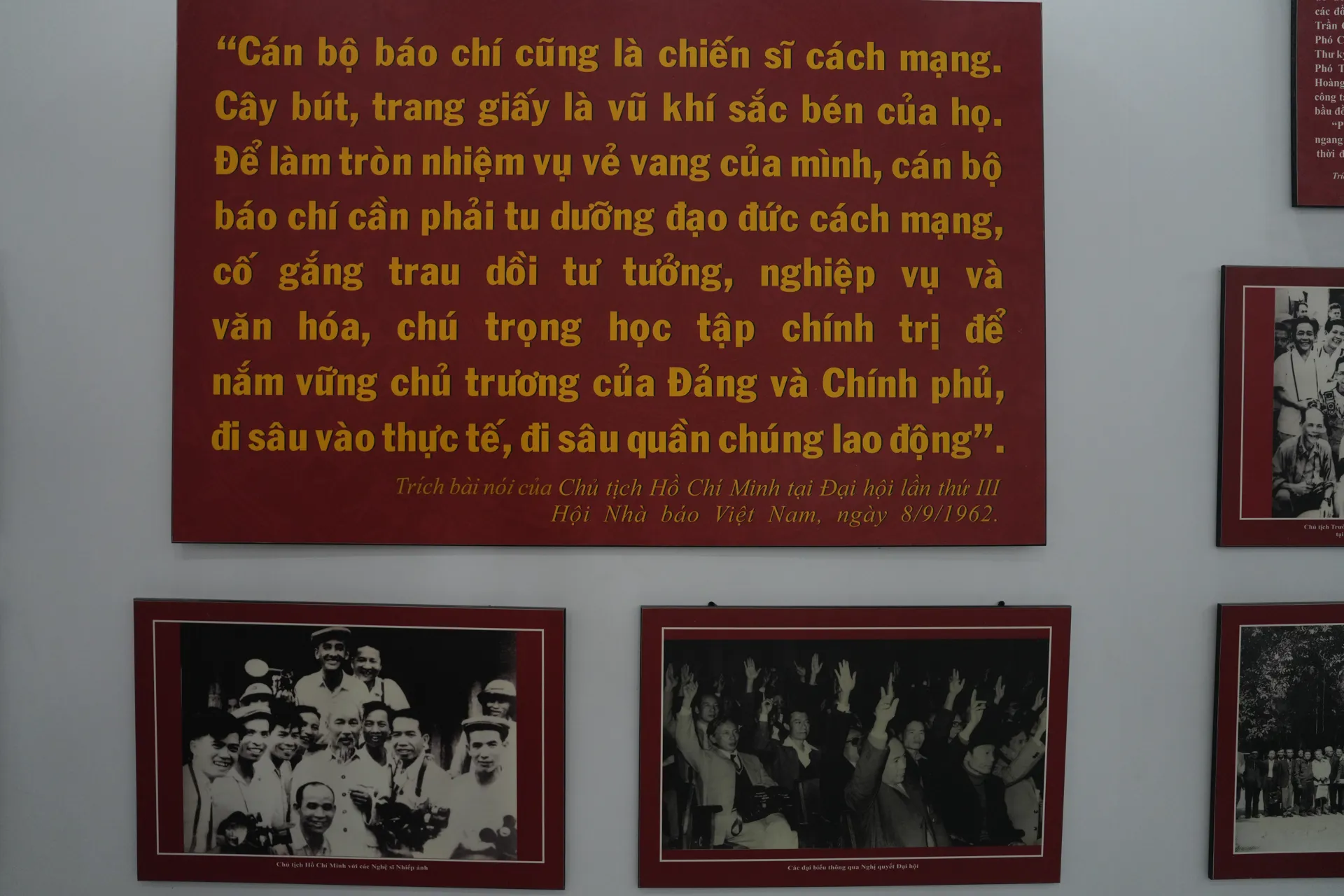
President Ho Chi Minh's 1962 message reminds journalists that pens and paper are weapons in the revolutionary cause. Photo taken at the Vietnam Journalists Association.
As we drove back to Hanoi, the jungle behind us seemed to bow. As if it knew: we were not just carrying stories, we were carrying belief.
And perhaps in every newsroom today, whether lit by LED screens or oil lamps, that belief still burns in the memory.





